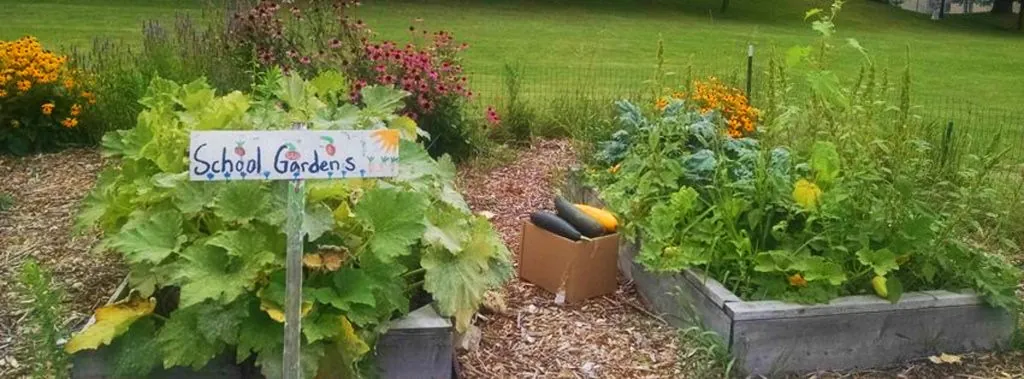Blog
Growing Healthy Minds & Appetites: The Benefits of School Gardens and Kitchens
By: Cecelia Wilken
There is a growing disconnect between farms and tables around the world. With the ease of modern-day groceries and influx of fast-food restaurants around the world, many children grow up without learning the fundamentals of proper nutrition. Common sense would suggest that as countries develop and as ease of access to healthful foods increases, so would knowledge and proper nutrition. However, while food may be more readily available, it seems health is still in decline. With a staggering increase in obesity rates, heart disease, and diabetes, it seems we have replaced one problem with another. A study done by the British Nutrition Foundation¹ found that many children from ages five-16 lack knowledge about where their food comes from. Some British children believed that eggs come from dairy cows and that foods like bread, yogurt, chocolate, and salmon belong in the fruits and vegetable food group.
In America, recent studies have found that traditional methods of teaching nutrition in public schools is lacking and are largely ineffective when attempting to change child dietary habits for the better², despite the fact that many elementary school teachers believe that nutrition education is “somewhat to very important” and that “nutrition education could benefit the child’s life for the long term” ². Many believe that integrating nutrition education into many different curriculums, such as math, English, science and even incorporating a school cafeteria component would help benefit and be more successful than a singular nutrition-based curriculum.

Photo: Courtesy of USDA – Flicker “Andrew’s School Garden” https://www.flickr.com/photos/usdagov/22478511942
One way of incorporating nutrition education into a curriculum is to introduce school gardens and kitchens. Research has concluded that students who engage in school gardens have a greater understanding of different vegetables, have more positive opinions about eating vegetables, and are more willing to try different types of vegetables³. Additionally, school gardens offer an alternative approach to teaching various subjects; such as math, science, economics, social studies, and agriculture.
In Arizona, it appears efforts to help children understand nutrition is well on the way. Arizona Farm Bureau has a fully-functioning “Ag in the Classroom” program that includes helping students understand where their food comes from. Arizona Farm Bureau is also partnered with the University of Arizona and its School Garden program. Plus, Arizona’s Education Department has a “Farm to School” program.
Another program is the Edible Schoolyard Project, founded in 2005 by Alice Waters. Their mission, “to build and share a national edible education curriculum for pre-kindergarten through high school.”
For the last 20 years, students at the founding garden at King Middle School in Berkeley, California cultivate a one-acre teaching garden where they grow food that will eventually be cooked in a classroom kitchen. In this cafeteria, all the school meals are made from scratch using locally sourced produce and seasonal ingredients.
“Edible education connects the experience of school to the real, lived experience of our students. It prioritizes access to the healthy food that underpins all other efforts to give children a strong start at school and in life.” – Edible Schoolyard Project Mission Statement
*** VIDEO ABOUT EDIBLE SCHOOLYARD***
https://www.youtube.com/watch?v=DC3H0sxg4tY&t=30s
The Edible Schoolyard Project has helped incorporate 5,513 programs into 53 United States and territories as well as 64 countries around the world. There are over 80 Edible Schoolyard chapters around Arizona. To find a chapter in your area, use this interactive tool (https://edibleschoolyard.org/network). To see various resources, teaching plans, materials and find more information about starting your own chapter, please visit (https://edibleschoolyard.org/resource-search).
“Learning laboratories” like school gardens and kitchens help promote the consumption of healthy produce. In addition, school gardens can highlight the importance of practicing sustainable waste-management practices such as composting and recycling. These community gardens help reconnect our children with earth, helping shape healthy minds, bodies and appetites.
For more articles like this check out the Fill Your Plate Blog. Looking for some fresh produce? Check out our Farmer’s Market tab to find one near you.
References
¹Tomatoes grow underground and pasta comes from animals, according to UK school children and teens – British Nutrition Foundation. (2017). Retrieved from https://www.nutrition.org.uk/nutritioninthenews/pressreleases/1059-bnfhew2017.html
²Improving Nutrition Education in U.S. Elementary Schools: Challenges and Opportunities. (2015). Journal Of Education And Practice, 6(30). doi: ISSN 2222-288X
³Ratcliffe, M., Merrigan, K., Rogers, B., & Goldberg, J. (2009). The Effects of School Garden Experiences on Middle School-Aged Students’ Knowledge, Attitudes, and Behaviors Associated With Vegetable Consumption. Health Promotion Practice, 12(1), 36-43. doi: 10.1177/1524839909349182
SOzer, E. (2006). The Effects of School Gardens on Students and Schools: Conceptualization and Considerations for Maximizing Healthy Development. Health Education & Behavior, 34(6), 846-863. doi: 10.1177/1090198106289002
















